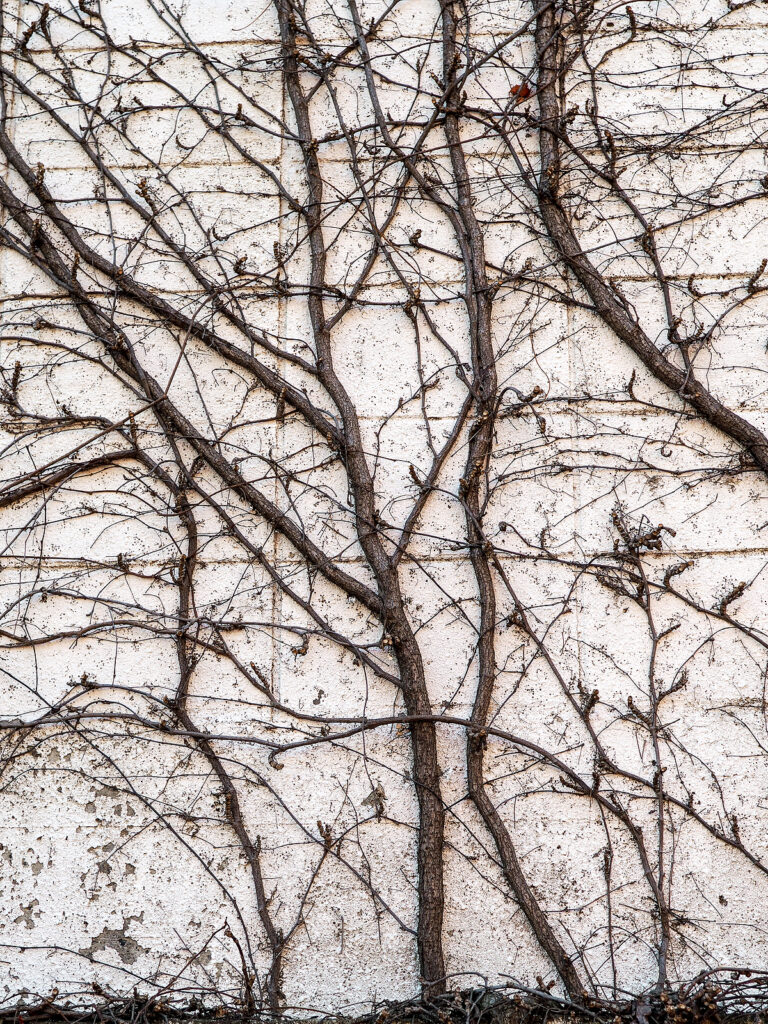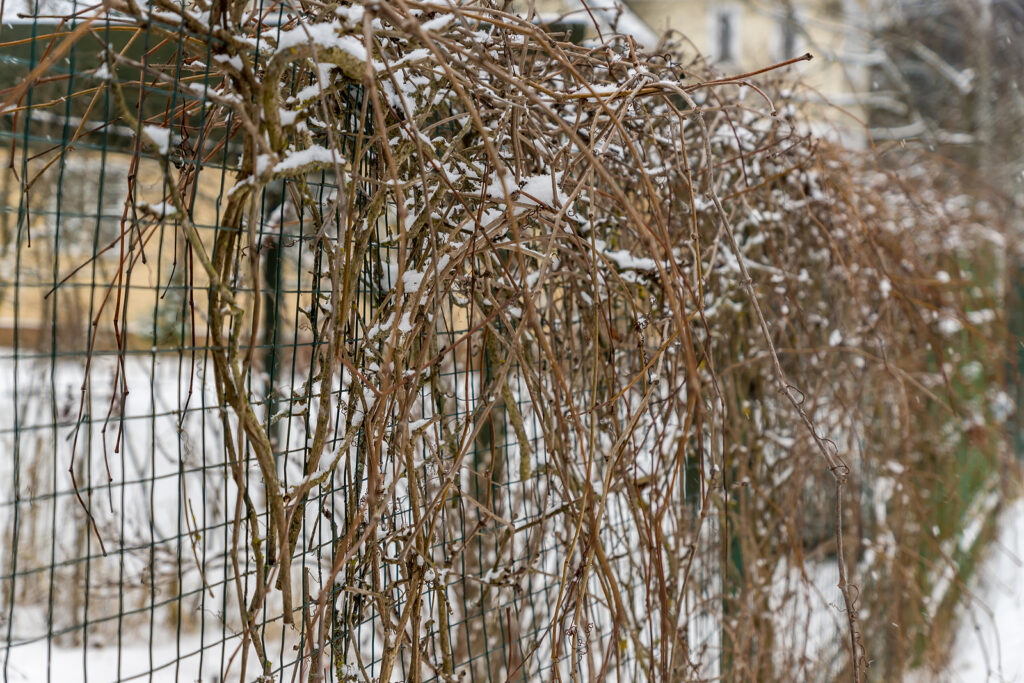Prune vines to improve the form of the plant. Prune vines to benefit the parts of the plant that remain. Prune vines to increase flower or fruit production.
If you considered the growth habit of the vine and the space to be covered when selecting the vine, pruning will not be difficult; it will almost be second nature.
A vigorous growing vine planted where there is only space for one of moderate growth will means a lot of pruning and that pruning will likely detract from the natural beauty of the plant.
Study the space and growing conditions—sunlight, soil, and soil moisture–before planting a vine; choose the right vine for those conditions. If a vine is not right for the situation, remove it and replant one that is.
Pruning newly planted vines
Newly planted vines should be cut back severely, almost to the ground. This seems counterintuitive, but it will be good for the vine; it will induce strong basal and root growth. The plant’s energy will be channeled into one or a few new stems stimulating rapid upward growth.
In the following season or two after planting, most vines will need little pruning. During this time, train the main stem or trunk upwards and train the lateral branches in the direction you desire. If a vine grows leggy with few leaves or flowers, trim it back to encourage new growth and to develop more branches

Pruning annual vines
Annual vines need little or no regular pruning except in mild winter regions where growth may not be killed by winter cold. Most annual vines die back when the frost comes in autumn. Annual vines can be cut or pulled from their support and trimmed to the ground. They often reseed and will reemerge in spring.

Pruning perennial vines
Perennial vines commonly need some annual pruning. Dead, damaged, and diseased wood should be removed. Then the main stem or trunk and lateral branches should be cut back to keep the vine within bounds and prevent it from growing where it’s not wanted.
Prune deciduous vines in spring as the vine begins to leaf out; this will allow you to distinguish dead wood from live wood that is leafing out. The structure of a deciduous vine is obvious in late winter and early spring before new leaves appear.
To prune, follow each lateral branch back to its origin at the main stem or trunk; cut back side branches as necessary to fit the structure. Prune away spindly growth. Remove any suckers from the base.
Prune away some old stems each year; this will allow the plant to direct its energy to younger stems to produce leaves and flowers, usually lower on the plant.
Prune away tangled stems or disentangle stems; this will keep the plant from becoming an unsightly mass of dead, diseased, and weak stems. This will allow sunlight to reach the remaining stems which will in turn stimulate leafy and flower growth.
Ground cover vines and vines that ramble
Vines that ramble—grow along the ground—need little or no regular pruning. These vines are used as groundcovers and often grow in mounds.
Most rambling vines that become tangled and dense can be pruned back to the ground every few years.

How to renovate an overgrown vine
There are two ways to renovate an overgrown vine; choose one:
- Cut the overgrown plant almost to the ground; when new sprouts appear, select one or a few stems to renew the plant’s growth; retrain the vine to support.
- Study the overgrown vine and select one or a few stems to be the trunk or trunks; tie a bright ribbon around these so that you can follow their growth and do not accidentally prune them. Then select strong lateral branches to leave in place; again, mark these with ribbon. Now, remove all other growth. This selective pruning will preserve some older wood; this will allow most vines to bloom in the same year as they were heavily pruned.
When to prune vines
- Prune non-flowering vines in late winter or early spring while the plant is still dormant.
- Prune spring-flowering vines after flowers have stopped blooming.
- Prune summer-flowering vines in autumn or early spring.
- Prune formal vines in summer to keep the growth in check and to give and maintain the effect you want.
- Prune overly aggressive vines at any time to keep the growth in check.
When to prune selected vines
- Bittersweet (Celastrus scandens): Prune in late winter or early spring; prune to keep the vine within bounds; prune stems to size and shape desired.
- Chinese Wisteria (Wisteria chinensis): Prune to promote flowering; prune in winter when the vine is dormant; trim new shoots back to the second bud from the tip; remove all leafless branches; cut side branches leaving two or three buds; allow all nubby spurs to remain; prune in summer to reduce all side branches by one-half.
- Clematis (Clematis spp.): Prune according to the bloom time of your plant; bloom time of clematis varieties varies. Prune spring-blooming clematis right after flowering. Bloom early summer-blooming clematis or year-round blooming clematis in early spring when new growth appears; cut back 6 to 8 inches and to a well-formed leaf bud. Fall-blooming clematis should be pruned in early spring to about 12 inches high.
- Climbing Hydrangea (Hydrangea petiolaris): Prune after flowering; train vines as needed; keep aerial rootlets off wood structures.
- Honeysuckle (Lonicera spp.): Prune after the vine finishes blooming; prune to keep within allotted space.
- Trumpet Vine (Campsis radicans): Prune as needed in late winter or early spring to control the size and reduce weight; cut back shoots to develop a strong main framework of woody stems; leave stubs with three or four buds when cutting off shoots.
- Virginia Creeper and Boston Ivy (Parthenocissus spp.): Prune in early winter as needed to control size; prune again in early summer if necessary; do not cut the vine at base—this will result in dead stems clinging to the wall.















